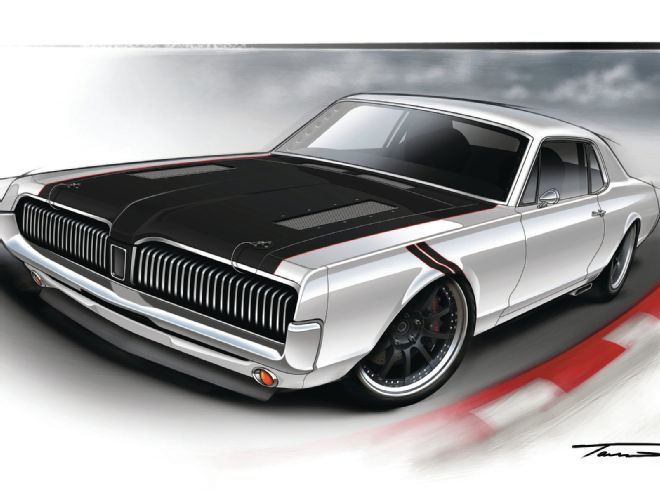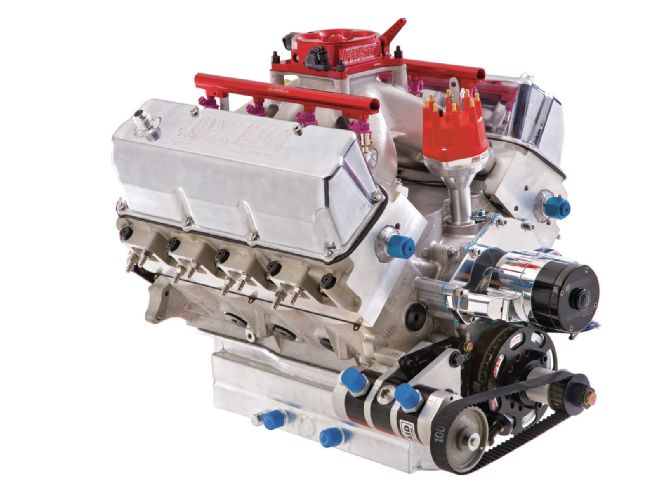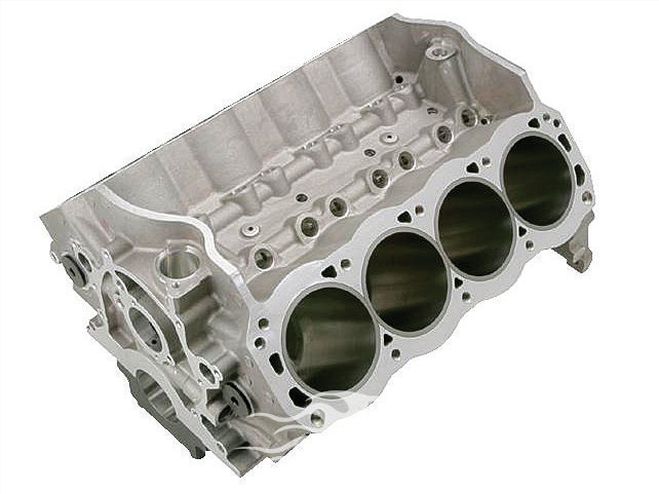
NASCAR technology for the street sounds counterintuitive, but in reality the realm of ultimate pushrod race engines holds the secret to rejuvenating one of the best head designs ever created for the small-block Ford: the Cleveland. That’s because prior to the release of Ford Racing’s magnificent clean-sheet FR9 race engine in 2009, Ford’s NASCAR program had overt muscle car roots. For the three decades preceding the FR9, the engines powering every Blue Oval racer were essentially 351 Windsor blocks topped with 351 Cleveland-derived heads.
Thirty-plus years is an extraordinarily long time to go between racing engine changes for a manufacturer, but you know what that gets ya? A lot of time sorting out and fine-tuning to create fully optimized engines. For example Carl Edwards, driver of the No. 99 Ford for Roush Fenway, finished the 2008 season with a series-high nine victories. Not too bad for a platform considered archaic by NASCAR standards.
That extended life also brought forth dramatically revised and near perfected versions of the original Cleveland heads, thanks to the efforts of Ford Racing, Roush Racing, and Robert Yates. The A351, B351, C302, C302B, C3, C3H, SC1 (Sprint Car 1), and finally the most radical, the D3. That last head was worked so well that it was used right until the FR9 bowed. Even cooler is the fact that all of them will technically bolt right onto any Ford Windsor or Cleveland small-block.
When NASCAR banned the use of canted valves on cylinder heads (the Cleveland’s signature design) in 1990, Robert Yates stepped in to revise the C302 head. The intake valve cant was removed and the angle was altered, but the traditional stagger arrangement remained. The new heads colloquially became known as “Yates.” Notwithstanding, Ford used recycled part numbers on some of the intake manifolds so there are Yates and C302 intakes that carry the same part number. That did lead to a bit of an issue with identification among those seeking the ultimate heads for their small-block Fords, since the pre- and post-Yates heads were quite similar looking to the untrained eye.

Of course all of those iterations were very specific application race parts designed for ultrahigh rpm use and regular maintenance. What the Ford world really needed was a head that took all of those lessons learned from decades of NASCAR competition, and put them into a street-friendly head—one that makes massive power, of course.
That’s where Troy Bowen at Ford Performance Solutions (FPS) saw a gap. There were updated Cleveland-style heads on the market, and Cleveland-headed Windsors are nothing new, but he felt there was power left on the table. His first iteration, known as the Avenger XTC 351, worked well, but a newer version, dubbed the Avenger XTC-R, blends original Cleveland and the best bits of NASCAR design into a head. That brings everything full circle—street to race, and back to street. That’s perfect for a car like Max Effort that’s a little bit Pro Touring, a little bit road race, and touch of NASCAR thrown in for good measure.
 The foundation for Max Effort’s engine is Dart’s virgin 355-T61 aluminum block. The block uses scalloped outer water jacket walls to improve coolant flow around the cylinders to ward off detonation and promote consistent cylinder temperatures when run at extended high rpm. On top of that, the upgraded oiling system features a complete stock-type system, plus a low-restriction priority main oiling system with front and rear external oil pump feeds. Both of those benefits are especially important when on track. The block’s light weight will take important pounds off the nose to help make up for Max Effort’s heavy hideaway headlights.
The foundation for Max Effort’s engine is Dart’s virgin 355-T61 aluminum block. The block uses scalloped outer water jacket walls to improve coolant flow around the cylinders to ward off detonation and promote consistent cylinder temperatures when run at extended high rpm. On top of that, the upgraded oiling system features a complete stock-type system, plus a low-restriction priority main oiling system with front and rear external oil pump feeds. Both of those benefits are especially important when on track. The block’s light weight will take important pounds off the nose to help make up for Max Effort’s heavy hideaway headlights.
The craziest part of this build isn’t the awesome power production; it’s that this combination we threw together is designed to run on premium 91-octane pump gas. Read on to see how FPS makes it happen.
By the Numbers
438ci Ford
Block: Dart 9.5 deck Race Series aluminum Windsor
Crank: RPM-International
Rods: RPM-International
Pistons: Ross Racing
Rings: Akerly and Childs
Bearings: Clevite 77 from Summit Racing
Balancer: ATI Super Damper
Timing Set: COMP Cams
Oil pan: Aviaid dry-sump
Oil pump: Aviaid two-stage dry-sump, Petersen pulley
Cylinder heads: Ford Performance Solutions XTC-R 351
Rocker arms: T&D Machine shaft rockers, modified by Ford Performance Solutions
Intake: Edelbrock 2863 C3 NASCAR, ported and EFI’d by Ford Performance Solutions
Gaskets: Fel-Pro throughout, Fel-Pro PermaTorque MLS head gaskets
Bolts/studs: ARP throughout, ARP stainless bolt kit from Summit Racing
Cam: COMP Cams solid roller
Lifters: COMP Cams solid roller
Pushrods: COMP Cams
Distributor: MSD Pro-Billet
Plug wires: MSD Super Conductor
Valve covers: Ford Performance Solutions polished aluminum
On the Dyno
438ci Ford Small-Block
Snow Performance
Naturally Aspirated
RPM:
TQ:
HP:
TQ:
HP:
4,000
525
400
518
394
4,100
540
422
528
412
4.200
552
442
537
430
4,300
561
459
547
448
4,400
574
482
556
466
4,500
588
504
569
487
4,600
601
526
583
511
4,700
612
548
594
531
4,800
619
566
605
553
4,900
624
582
610
569
5,000
629
599
613
584
5,100
631
613
615
597
5,200
630
624
615
609
5,300
627
633
612
618
5,400
624
642
609
627
5,500
620
650
606
634
5,600
616
657
602
642
5,700
610
662
599
650
5,800
605
669
595
657
5,900
602
677
589
662
6,000
600
685
584
667
6,100
596
692
580
674
6,200
592
698
576
680
6,300
586
703
570
684
6,400
581
708
565
688
6,500
577
714
561
694
6,600
574
721
558
701
6,700
569
725
553
705
6,800
563
729
547
708
6,900
555
730
539
709
7,000
548
731
533
710